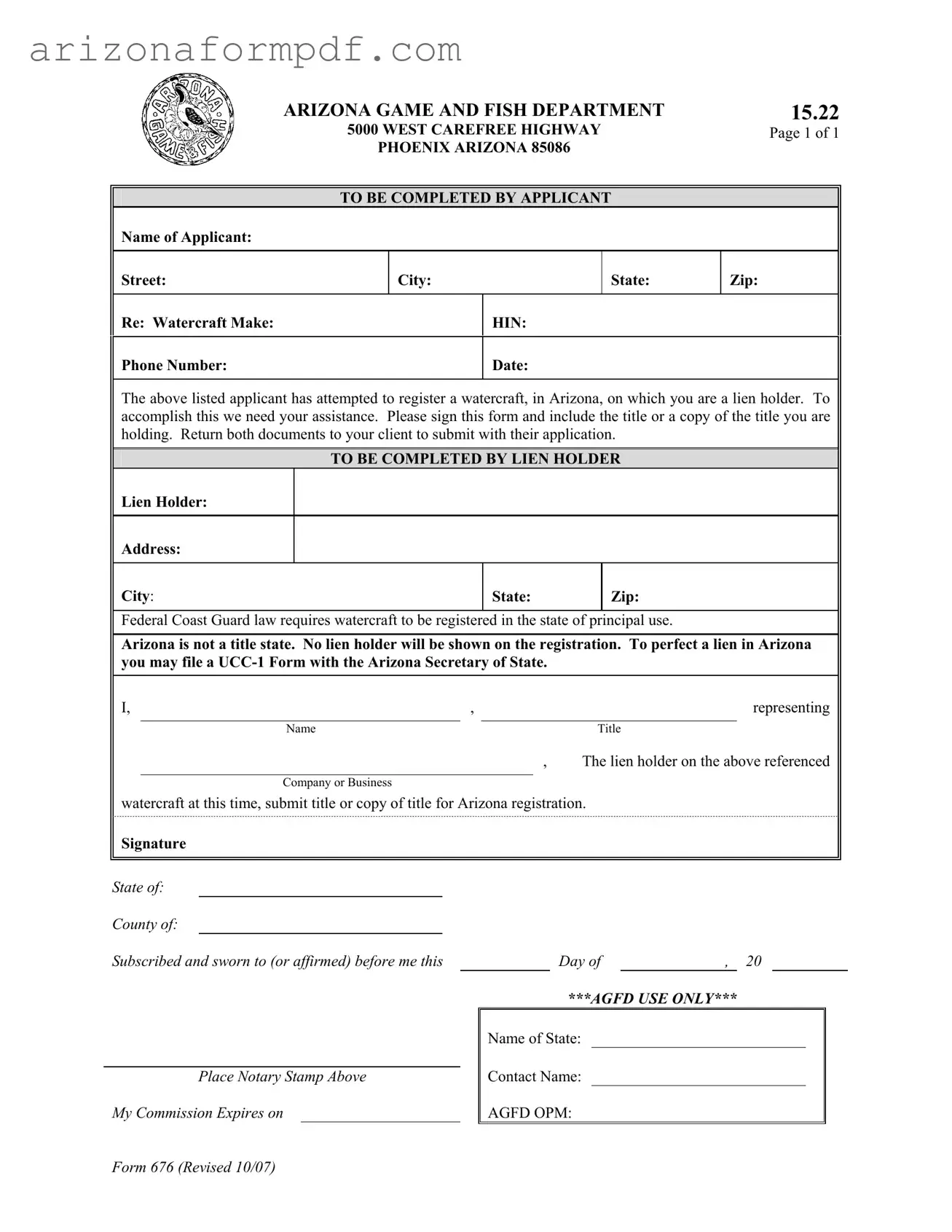What is the Arizona 676 form?
The Arizona 676 form is a document used to assist in the registration of a watercraft in Arizona when there is a lien holder involved. It requires the lien holder to provide their signature and a copy of the title to facilitate the registration process.
Who needs to complete the Arizona 676 form?
The form must be completed by both the applicant who is attempting to register the watercraft and the lien holder who holds a claim on the watercraft. Each party has specific sections to fill out.
What information is required from the applicant?
The applicant must provide their name, address, phone number, and details about the watercraft, including the make and Hull Identification Number (HIN). This information helps identify the watercraft being registered.
What does the lien holder need to provide?
The lien holder must complete their section of the form, which includes their name, address, and a statement indicating they are the lien holder. They also need to submit the original title or a copy of the title for the watercraft.
Why is the lien holder's signature necessary?
The lien holder's signature is necessary to confirm their approval of the registration. This step ensures that the registration process is compliant with state laws and acknowledges the lien holder's interest in the watercraft.
What happens if the lien holder does not sign the form?
If the lien holder does not sign the form, the registration application cannot be processed. It is important for the applicant to obtain the lien holder's signature to move forward with the registration.
Is Arizona a title state for watercraft?
No, Arizona is not a title state for watercraft. This means that while a lien may exist, it will not be shown on the watercraft registration. However, lien holders can file a UCC-1 Form with the Arizona Secretary of State to perfect their lien.
How should the completed Arizona 676 form be submitted?
The completed form, along with the title or a copy of the title, should be returned to the applicant. The applicant will then submit these documents with their watercraft registration application to the appropriate authorities.
Is there a specific format for the notary section?
Yes, the notary section must be completed by a notary public. It includes a place for the notary's signature, the notary stamp, and the expiration date of their commission. This adds an additional layer of verification to the document.
Where can I find the Arizona 676 form?
The Arizona 676 form can typically be obtained from the Arizona Game and Fish Department's website or by visiting their offices. It is important to ensure you are using the most current version of the form.

